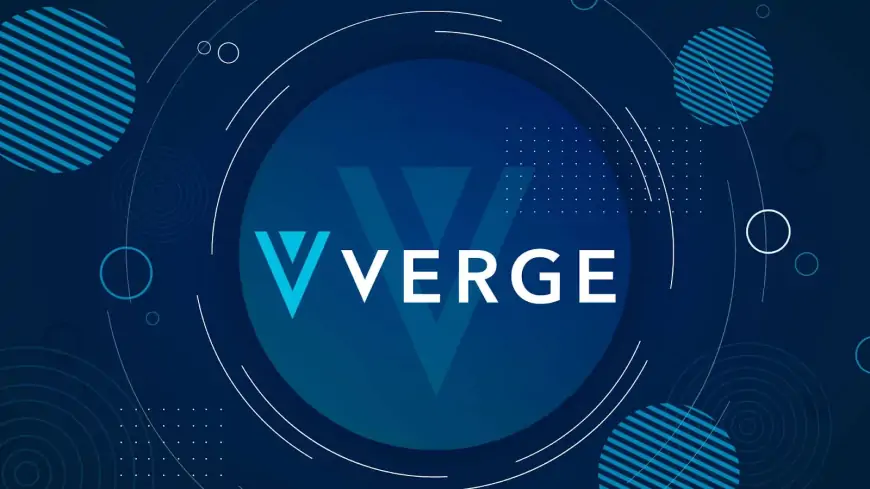What is Verge (XVG) and how can it revolutionize digital privacy?
Explore the innovative features and potential of Verge (XVG) in securing online transactions.

What is Verge (XVG)?
Verge (XVG) is a decentralized cryptocurrency that operates on an open-source platform, aiming to provide fully anonymous transactions by masking the location and Internet Protocol (IP) addresses of those involved. It is traded on major cryptocurrency exchanges under the symbol XVG.
Verge utilizes a proof-of-work consensus mechanism that accommodates five distinct algorithms: Scrypt, X17, Lyra2rev2, myr-groestl, and blake2s, providing flexibility for users to employ various mining devices.
History of Verge (XVG)
Verge (XVG) was introduced in 2014 under the name DogeCoinDark on the BitcoinTalk forum, a common platform for cryptocurrency announcements. It was developed by Justin "Sunerok" Valo, a software engineer, who identified a need for greater anonymity in existing blockchains. Originally perceived as a fork of Dogecoin, some community members speculate it may have origins linked to Bitcoin. In 2016, the project rebranded to Verge to distinguish itself from Dogecoin.
The Verge (XVG) network encountered notable security incidents, including a 51% attack in April 2018, resulting in the theft of approximately $1.1 million worth of XVG. Another attack occurred in May 2018, where around $800,000 worth of XVG was stolen. A third attack was reported in February 2021.
Despite these challenges, the Verge team remains committed to developing and expanding its presence in the blockchain and cryptocurrency sectors. Verge is traded on various decentralized exchanges, and in 2023, an ERC-20 token (XVGETH) was introduced, enabling users to swap between XVG and XVGETH tokens.
As of June 27, 2028, the total supply of XVG is 16.55 million, with approximately 16.51 million XVG tokens in circulation.
Concerns about Verge
Verge emphasizes anonymity by masking users' IP addresses, which are unique identifiers linked to devices connected to the internet. IP addresses can be used to track user activity, but Verge's technology obscures them, ensuring transactions are untraceable.
To achieve anonymity, Verge integrates with several privacy-centric networks such as The Onion Router (TOR) and Invisible Internet Project (I2P). TOR safeguards identities by routing communications through a decentralized network of relays and tunnels operated by volunteers globally. Meanwhile, I2P encrypts user data and channels it through a peer-to-peer network distributed worldwide, also managed by volunteers.
While Verge's public ledger openly displays transactions, the use of TOR and I2P layers conceals the geographic locations and IP addresses of those involved in the transactions.
Given its robust privacy features, Verge faces scrutiny from regulators in some regions that are developing regulations for privacy coins. As a result, certain centralized and regulated exchanges have delisted privacy coins to comply with regulatory requirements, restricting access to these cryptocurrencies and complicating their conversion into fiat currencies for users in those jurisdictions.
Verge vs. Bitcoin
Both Verge and Bitcoin are decentralized cryptocurrencies, but Verge distinguishes itself with a strong emphasis on privacy. In terms of market capitalization, Verge is considerably smaller compared to Bitcoin.
While Bitcoin has a capped supply of 21 million coins, Verge's total supply is larger at 16.55 billion tokens. Both cryptocurrencies utilize a proof-of-work (PoW) mechanism to validate transactions on their respective blockchains. Verge, however, supports five different mining algorithms, a feature that has been associated with past security incidents on its blockchain.
Verge also implements a halving schedule similar to Bitcoin, where mining rewards are reduced by half at specific intervals. While Bitcoin's block reward halves every 210,000 blocks, Verge follows a schedule of halving every 500,000 blocks.
What is the current status of Verge cryptocurrency?
Verge (XVG) remains accessible on numerous decentralized exchanges, with ongoing updates and enhancements being implemented by developers to the blockchain and its ecosystem.
Should one consider purchasing XVG?
It's uncertain what lies ahead for XVG, so whether it's a worthwhile investment depends on your preferences, market outlook, and your personal beliefs about the future of the cryptocurrency.
Who is responsible for developing Verge Coin?
Justin Valo is the software developer who initially conceived the idea behind Verge.
In summary, Verge (XVG) is a privacy-focused cryptocurrency utilizing proof-of-work and five distinct algorithms, alongside the TOR network and I2P to mask users' addresses.












































